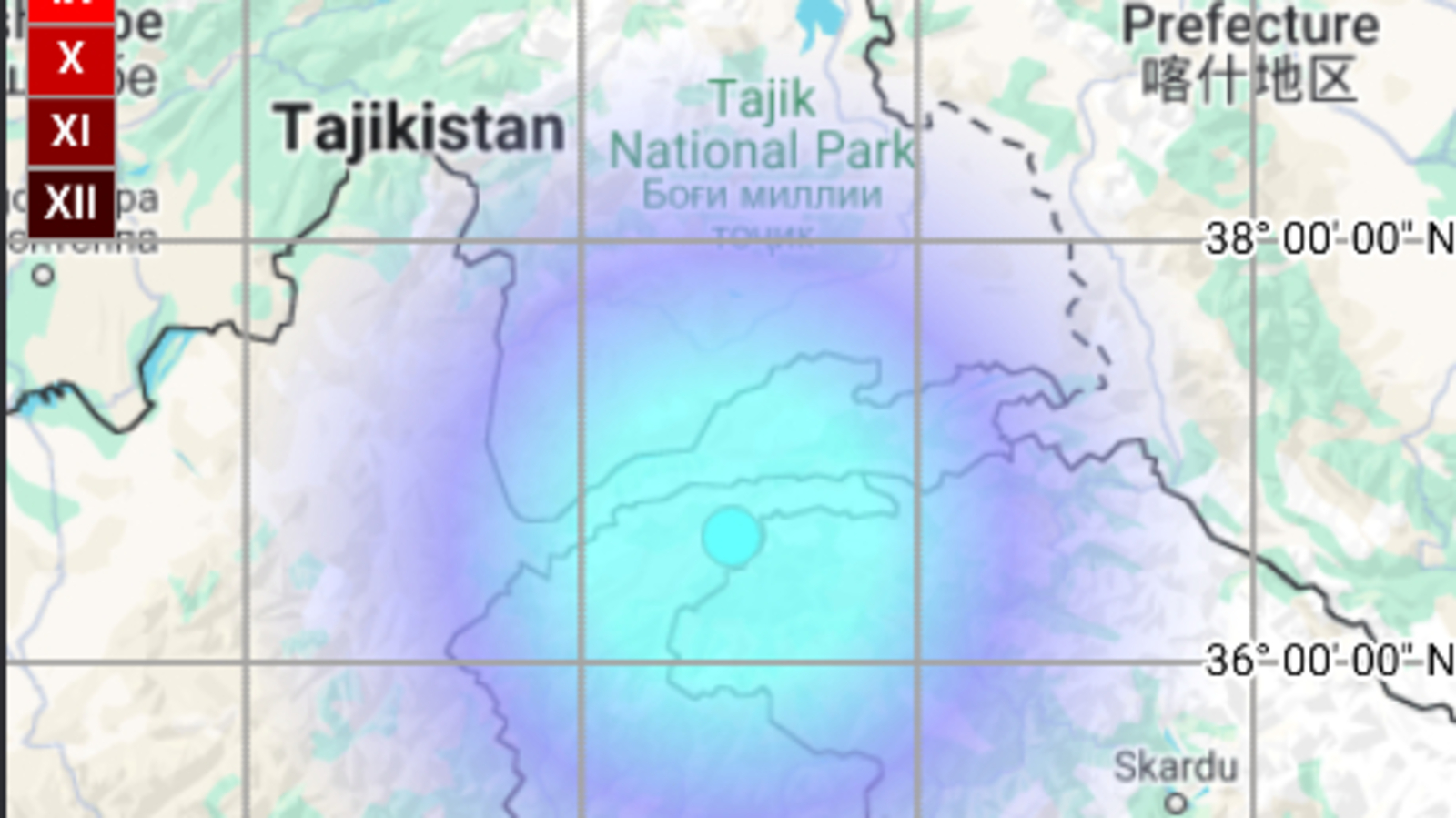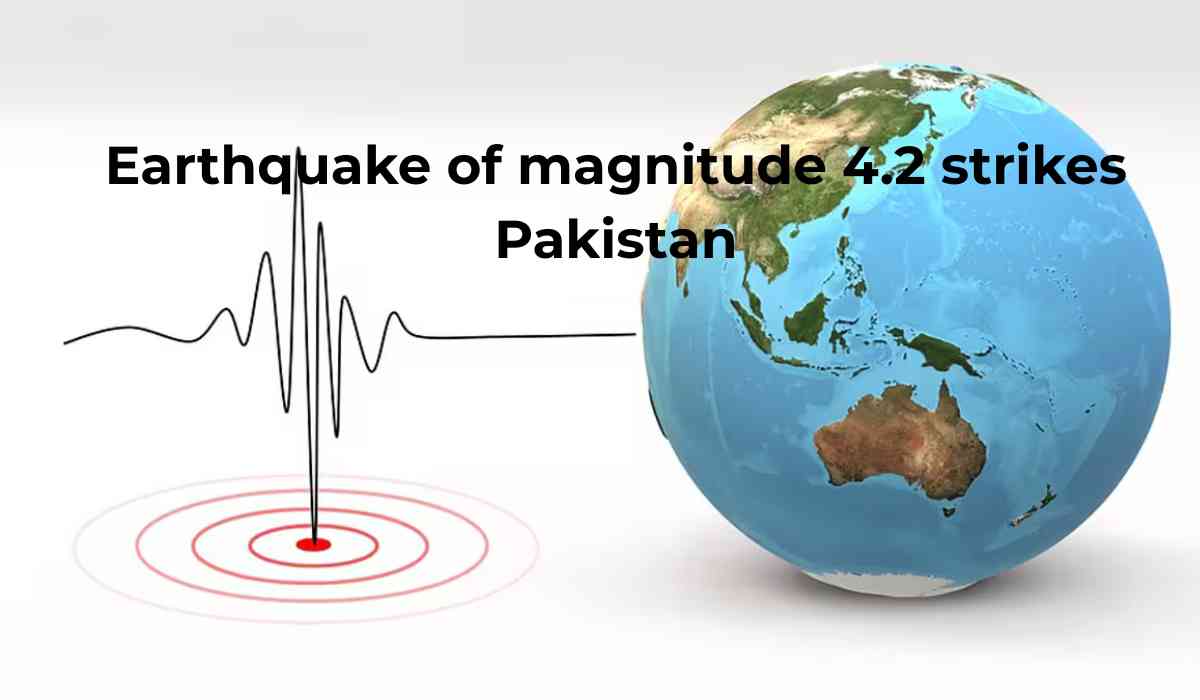On Monday, May 5, 2025, Pakistan experienced a significant earthquake with a magnitude of 4.2 on the Richter Scale. The tremors were felt across various parts of the country at approximately 4:00 PM local time. According to the National Center for Seismology (NCS), the earthquake’s epicenter was located at a depth of 10 kilometers, with the coordinates at latitude 36.60°N and longitude 72.89°E. Thankfully, there were no immediate reports of injuries or damage.
Key Earthquake Details
-
Magnitude: 4.2 on the Richter Scale
-
Location: Latitude 36.60°N, Longitude 72.89°E
-
Depth: 10 kilometers
-
Time: 4:00 PM local time (IST)
-
Region Affected: Pakistan
Despite the intensity of the tremors, local authorities did not report significant damage or casualties. However, further updates on the situation are expected as more information becomes available.

Earthquake Impact in Afghanistan
The tremors were also felt across the border in Afghanistan, where a similar earthquake of magnitude 4.2 occurred at 12:35 PM IST on the same day. The earthquake in Afghanistan had a shallow depth of 10 kilometers, making it more susceptible to aftershocks. The coordinates for the Afghan earthquake were given as latitude 36.60°N and longitude 71.91°E.
In its report on social media, the NCS shared the details of the earthquake that struck Afghanistan:
“EQ of M: 4.2, On: 05/05/2025 12:35:23 IST, Lat: 36.60 N, Long: 71.91 E, Depth: 10 Km, Location: Afghanistan.”
Previous Earthquakes in Afghanistan
This recent earthquake in Afghanistan was not an isolated event. Just two days earlier, on May 3, 2025, another earthquake of magnitude 4.3 struck the region. This earthquake had a depth of 15 kilometers and was located at latitude 36.52°N and longitude 71.20°E. Earlier in the week, on May 2, Afghanistan also felt the tremors of a 4.5 magnitude earthquake.
Shallow earthquakes like those experienced on May 5 and earlier are often more dangerous because they release more energy closer to the Earth’s surface, leading to stronger ground shaking and potential damage to structures.
An earthquake with a magnitude of 4.2 on the Richter Scale hit Pakistan at 16:00:05 (IST) today: National Center for Seismology (NCS) pic.twitter.com/KCEHhJWPoG— ANI (@ANI) May 5, 2025
Pakistan's Seismic Activity: A History of Earthquakes
This recent earthquake is not the first seismic event to hit Pakistan in recent weeks. In fact, the region is one of the most seismically active in the world, primarily due to the complex tectonic forces at play. Pakistan lies at the convergence of the Eurasian and Indian tectonic plates, making it prone to frequent seismic activity.
Previous Earthquakes in Pakistan
-
April 30, 2025: A magnitude 4.4 earthquake struck Pakistan, with the epicenter located at latitude 31.08°N and longitude 68.84°E, at a depth of 50 kilometers. The NCS confirmed the details in a post on social media:
“EQ of M: 4.4, On: 30/04/2025 21:58:26 IST, Lat: 31.08 N, Long: 68.84 E, Depth: 50 Km, Location: Pakistan.”
-
April 12, 2025: Another earthquake of magnitude 5.8 jolted the country, registering at a depth of just 10 kilometers. This event occurred at latitude 33.70°N and longitude 72.43°E. The NCS issued a statement confirming the earthquake on social media:
“EQ of M: 5.3, On: 12/04/2025 13:00:55 IST, Lat: 33.70 N, Long: 72.43 E, Depth: 10 Km, Location: Pakistan.”
Why Pakistan Experiences Frequent Earthquakes
Pakistan is particularly vulnerable to earthquakes due to its geological setting. The country is located where two major tectonic plates—the Eurasian Plate and the Indian Plate—meet. This collision causes intense pressure to build up over time, which is released in the form of earthquakes.
Key Seismically Active Regions in Pakistan:
-
Balochistan: Located on the southern edge of the Eurasian plate, this region is highly prone to seismic activity.
-
Federally Administered Tribal Areas (FATA): Lying on the Iranian Plateau, FATA is another area with frequent seismic activity.
-
Khyber Pakhtunkhwa and Gilgit-Baltistan: These regions also lie on the southern edge of the Eurasian plate, contributing to their seismic vulnerability.
-
Sindh, Punjab, and Jammu and Kashmir: These areas sit on the northwestern edge of the Indian plate and experience occasional earthquakes, particularly due to tectonic stress from the collision between the plates.
Preparedness is Key
As a seismically active country, Pakistan must continue to prioritize earthquake preparedness to mitigate potential risks. While the recent tremors caused no immediate damage, the frequency and intensity of earthquakes in the region suggest that proactive measures in construction, infrastructure, and disaster response are crucial.
Local authorities, scientists, and the general public must stay vigilant and informed about seismic activity. Earthquakes, particularly those of shallow depth, can cause widespread devastation if not properly managed. With the tectonic forces at play, Pakistan and Afghanistan will likely continue to experience seismic events in the future, underscoring the need for ongoing awareness and preparedness.
With inputs from agencies
Image Source: Multiple agencies
© Copyright 2025. All Rights Reserved Powered by Vygr Media.


























